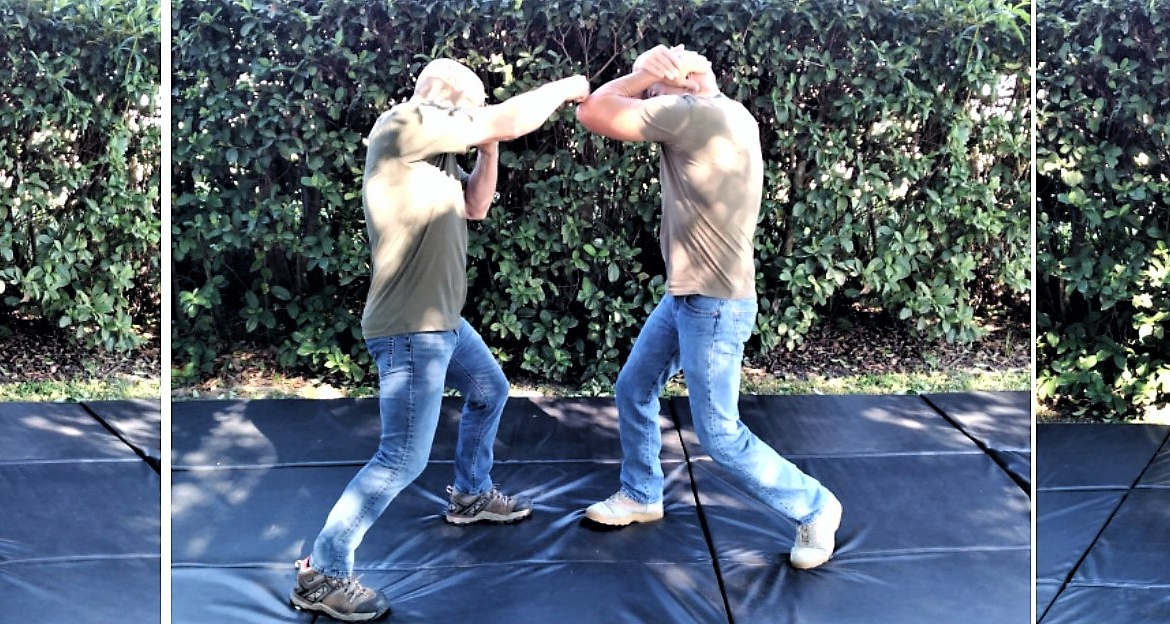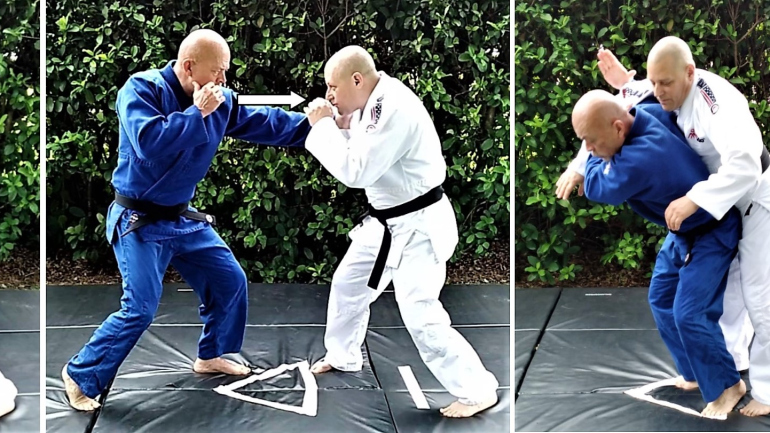Barron Shepherd’s Combat Judo differs from traditional Judo in several key ways, largely in its focus and application. While both are rooted in the same Japanese martial arts principles, Combat Judo is specifically tailored for real-world combat situations. Here are some key differences that set it apart from traditional Judo. Shepherd’s Combat Judo is an evolution of traditional Judo, it emphasizes adaptability, incorporating tactics and strategies with Aggressive Timing and Speed. Shepherd’s system trains practitioners to react quickly with an explosive and ballistic direct or counter attack.
The “ballistic” aspect also applies to the timing and speed of responses. A key part of ballistic movement is not just about strength, but also how fast and decisively an action is performed. The faster and more aggressive a response, the less chance the opponent has to react or defend themselves.
Osoto Gari vs Multiple Punches – Cover and Crash Entry
“Covers” or “frames” are techniques or defensive postures created by using hand and arm positioning to block attacks and create a protective barrier around your head or body, particularly in close-quarters combat. These techniques are also used as entries to set up or fit into throws and takedowns.

1.) Attacker is standing in a left foot forward fighting posture like a boxer. The defender is standing with his right foot forward and bladed off in ready fighting posture. The defender’s hands are up and his chin is tucked just below his right shoulder.
2.) The Attacker throws a right straight punch or haymaker. The defender brings his left up and cups the back of his head. His right simultaneously comes up grabbing over the top of his left wrist to form a cover that deflects or blocks the incoming punch.
3.) The Attacker throws a left punch. The defender switches the cover to the right side as he pushes off the left foot and steps his right foot forward. The defender crashes into the attacker with the cover stopping the attacker’s forward momentum and disrupting his posture, rocking him backwards on his heels.

4.) After crashing into the attacker forcing him backwards the defender’s then grabs the attacker by the shirt with his left hand at the top of the attacker’s right shoulder. As he steps toward eleven o’clock, the defender drives his shoulder and head into the attacker. His right-hand shoots under the attacker’s right arm and grabs his arm just above the elbow.
Note: Pulling the attacker’s right elbow toward his left as you push his head with your head to his right further disrupts his posture and balance.
5.) The defender pulls the attacker’s right elbow into his right hip and brings his right leg forward and up in between his left leg and the outside of the attacker’s right leg.
6.) The defender swings his right leg downward and back without letting his right foot touch the ground hitting the back of the opponent’s leg. Sweeping the attacker’s leg high, the defender continues to pull with the left hand and drive his head and shoulder downward. Turning his right shoulder toward the left continue the pull to take the attacker to the ground to finish the throw.
(To do the technique to the opposite side substitute the word “left” for “right” and “right” for “left”.)



